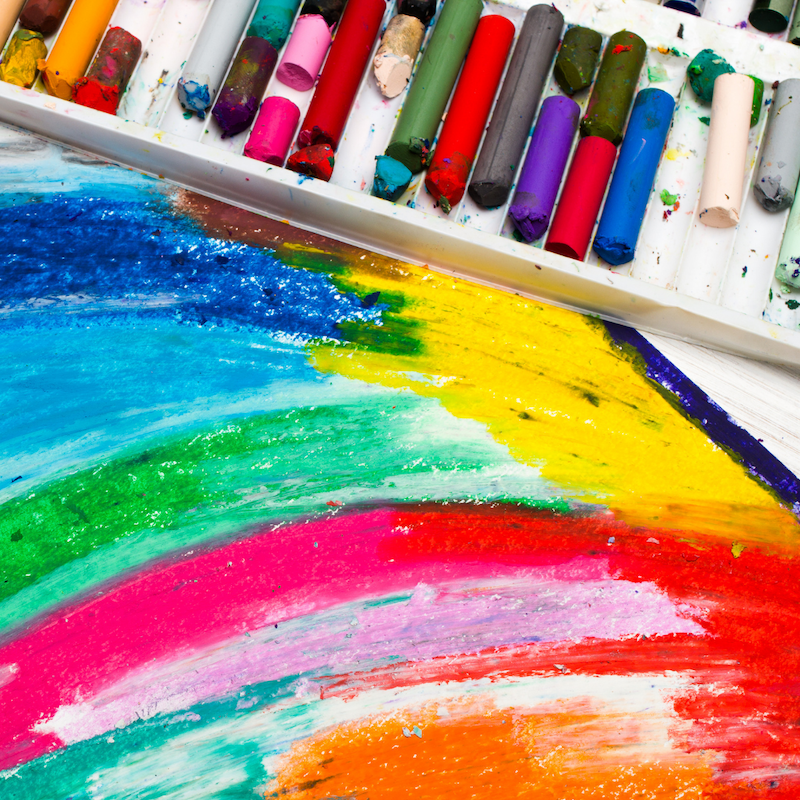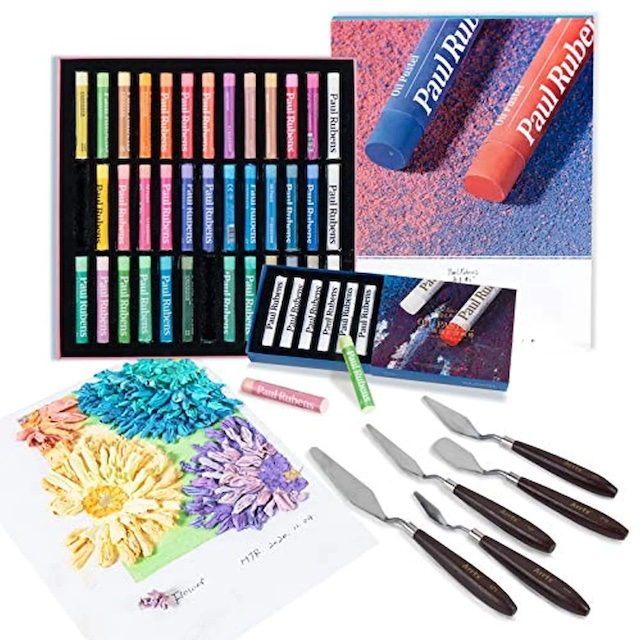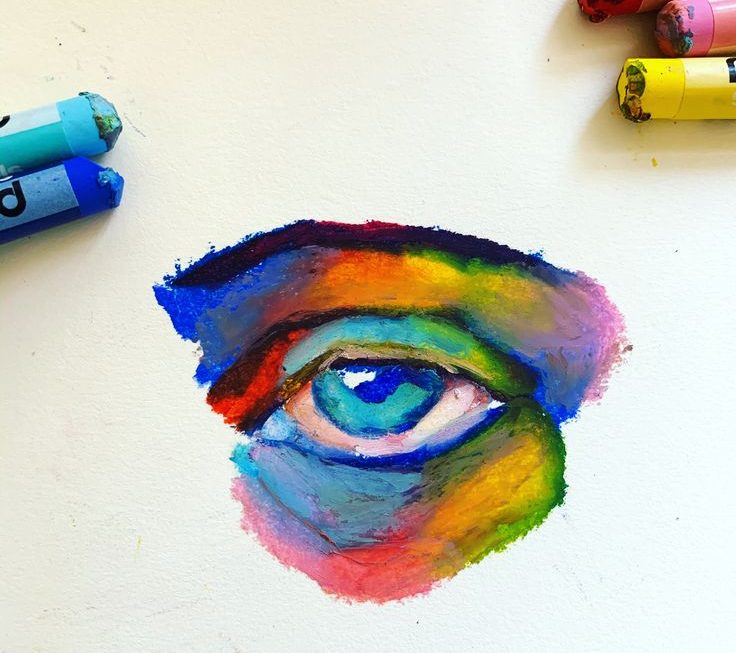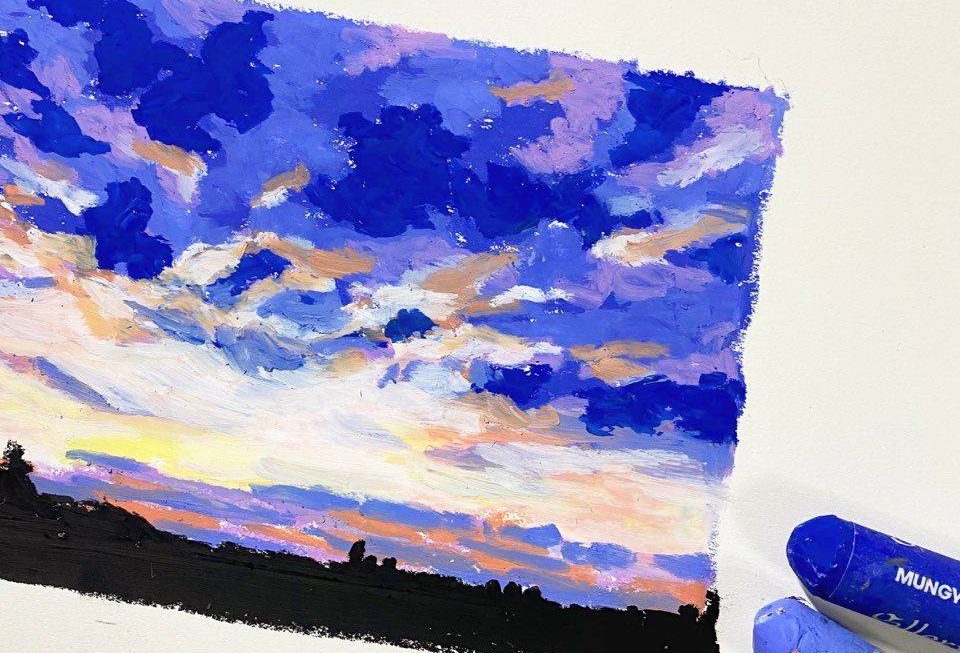Introduction
Oil pastels are a versatile and vibrant medium that have been a favorite of artists for many years. Despite their popularity, there are still many misconceptions about what oil pastels are and how they can be used. In this comprehensive guide, we will explore the beauty of oil pastels, their history, composition, techniques, and their applications in the art world. What is Oil Pastel? Whether you are a seasoned artist or a beginner looking to explore a new medium, this article will provide you with all the information you need to create stunning works of art with oil pastels.
Part 1: Understanding Oil Pastels
Level 1: History and Composition of Oil Pastels
Oil pastels were first developed in 1925 by the famous Japanese artist, Sakura. They are made from a mixture of pigment, non-drying oil, and a wax binder, which gives them a creamy and rich texture. This composition allows for smooth and easy application on various surfaces, making them a popular choice for artists.
Level 2: Characteristics and Properties of Oil Pastels
Oil pastels have a unique set of characteristics that distinguish them from other mediums. They are also versatile and can be used on a variety of surfaces, including paper, canvas, wood, and fabric. Their creamy texture and blendability make them a popular choice for artists who want to create rich and textured artworks.
 Part 2: Techniques for Using Oil Pastels
Part 2: Techniques for Using Oil Pastels
Level 1: Basic Techniques
There are a variety of techniques that can be used with oil pastels, including blending, layering, and scumbling. Blending involves mixing different colors together to create smooth transitions. While layering allows for building up of colors and textures. Scumbling is a technique where the pastel is applied in a rough and irregular manner, creating a textured effect.
Level 2: Advanced Techniques
In addition to the basic techniques, there are several advanced techniques that artists can use to create stunning effects with oil pastels. These include sgraffito, where the surface is scratched to reveal the layers beneath, and impasto, where the pastel is applied thickly to create a three-dimensional effect. By mastering these techniques, artists can create intricate and dynamic artworks with oil pastels.
Part 3: Applications of Oil Pastels in Art
Level 1: Fine Art
Oil pastels are a popular choice for fine artists who want to create bold and expressive works. They can be used to create vibrant landscapes, still life compositions, and portraits. As well as abstract and conceptual artworks. Many famous artists, such as Pablo Picasso and Joan Miró, have used oil pastels in their work, demonstrating their versatility and appeal in the art world.
Level 2: Mixed Media and Collage
Oil pastels are also commonly used in mixed media and collage artworks. With other mediums, such as acrylic paint, watercolor, and ink, they can create dynamic and textured compositions. Oil pastels can be used to add depth and dimension to the work, as well as to create subtle and nuanced details.
Part 4: Tips for Working with Oil Pastels
Level 1: Surface Preparation
Before starting a project with oil pastels, it is important to prepare the surface properly. Depending on the surface, it may need to be primed with gesso or a similar medium to ensure that the oil pastels adhere properly. Some surfaces may also require a fixative to protect the finished artwork from smudging or flaking.
Level 2: Experimentation and Exploration
One of the best ways to become comfortable with working with oil pastels is to experiment and explore different techniques and applications. Try blending and layering colors, as well as using different tools. Such as brushes, palette knives, and even your fingers, to create different effects. By allowing yourself the freedom to play and experiment, you can discover new and exciting ways to use oil pastels in your artwork.

Part 5: The versatility of oil pastels
Oil pastels are a versatile medium that can be used in a variety of ways to create stunning artwork. Here are some of the ways in which oil pastels can be used:
- Drawing: Oil pastels can be used for drawing on paper, creating vibrant and expressive works of art.
- Painting: Oil pastels can create paintings by applying the pastels directly onto the canvas. And blending them together to create beautiful textures and colors.
- Mixed media: Oil pastels in combination with other mediums such as watercolor, acrylic, and charcoal, can create mixed media artwork with unique textures and effects.
- Impasto: Oil pastels in thick layers to create impasto effects can add dimension and depth to the artwork.
- Sketching: Oil pastels for quick sketching and doodling can make them a convenient and portable medium.
The versatility of oil pastels makes them a popular choice among artists. And allowing for a wide range of creative possibilities and artistic expression.
Part 6: How to use oil pastels
Here are some tips on how to use them effectively:
- Layering: Oil pastels can create vibrant and textured artwork. Start with a light layer and gradually build up the colors to achieve the desired effect.
- Blending: Oil pastels can create smooth transitions between colors. Use a blending tool or your fingers to smudge the pastels together for a seamless look.
- Mixing: Oil pastels on the paper can create new colors and effects. Experiment with blending different colors to create unique shades and tones.
- Adding texture: Oil pastels can create texture in artwork, whether it’s adding lines, patterns, or rough edges to create depth and interest.
- Fixing mistakes: Unlike other mediums, use a clean cloth or eraser to remove any mistakes and make adjustments to your artwork.
Part 7: The difference between oil pastels and oil paints
While both oil pastels and oil paints are made from pigment and a binder, there are some key differences between the two mediums.
One of the main differences is in their consistency. Oil pastels have a soft and creamy texture, making them easy to blend and manipulate on the paper. On the other hand, oil paints have a buttery and oily consistency, which can be thinned with solvents and manipulated for longer periods of time.
Another difference is in the application. Oil pastels can be applied directly onto the paper without the need for brushes or solvents, while oil paints require the use of brushes, solvents, and a palette for mixing colors.
Additionally, oil pastels dry quickly and require minimal drying time, while oil paints take a longer time to dry and cure.
Both mediums have their own unique qualities and can be used to create beautiful works of art, but it’s important to understand their differences in order to use them effectively.
Part 8: The versatility of oil pastels
Oil pastels are a versatile medium in a variety of ways can create stunning artwork.
- Drawing: Oil pastels can for drawing on paper can create vibrant and expressive works of art.
- Painting: Oil pastels can create paintings by applying the pastels directly onto the canvas and blending them together to create beautiful textures and colors.
- Mixed media: Oil pastels in combination with other mediums such as watercolor, acrylic, can charcoal to create mixed media artwork with unique textures and effects.
- Impasto: Oil pastels in thick layers can create impasto effects, adding dimension and depth to the artwork.
- Sketching: Oil pastels for quick sketching and doodling can make them a convenient and portable medium for artists on the go.
The versatility of oil pastels makes them a popular choice among artists, allowing for a wide range of creative possibilities and artistic expression.
Conclusion
In conclusion, oil pastels are a dynamic and versatile medium that offer a wide range of possibilities for artists. From their rich history and unique composition to their diverse applications and techniques. Oil pastels provide artists with a medium that is both accessible and expressive. Whether you are a seasoned artist looking to expand your practice or a beginner eager to explore a new medium. Oil pastels are an excellent choice for creating vibrant and visually stunning artworks. You can confidently begin your journey into the world of oil pastels and unlock the potential for limitless creativity.




